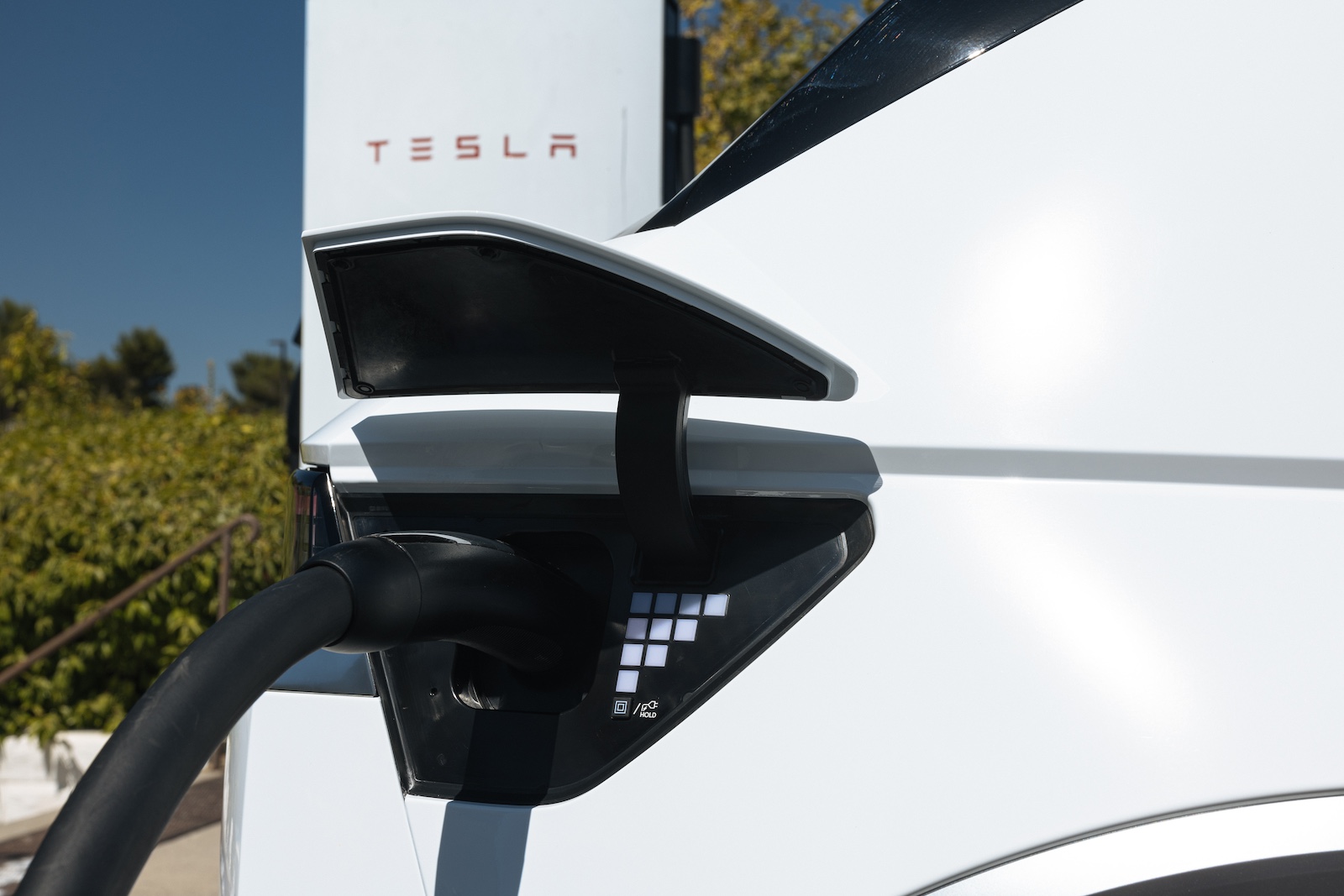The 2024 ranking of the Top 40 Canadian mining and metals companies by total revenue (Table 1) reveals a dynamic year marked by recovery, growth, and significant shifts in financial performance across the sector. Despite global economic uncertainties, geopolitical instability, and ongoing market volatility, the industry posted solid financial results.


Key highlights and most notable dynamics in the 2024 ranking
Top performer by revenue
Nutrien retained its leading position with total revenues of $34.27 billion, although it experienced a 9.6% year-over-year (YoY) revenue decline and a 44.6% drop in net income, reflecting margin pressures.
Strong turnarounds
Newmont and Barrick Gold posted substantial improvements in profitability. Newmont reversed a $3.3 billion loss in 2023 to achieve $4.63 billion in net income, driven by increased cash flow from operating activities (up 134%). Barrick Gold followed suit with a 60.5% increase in net income to $4.23 billion.
The rise of the mid-tier producers
Alamos Gold and several other mid-tier producers demonstrated strong momentum in 2024, as reflected in the 2024 ranking compared to the 2023 ranking. Alamos climbed four positions to #17, driven by strategic growth initiatives and operational performance enhanced by the acquisition of Argonaut Gold and its largest asset: Magino gold mine.
Revenue growth leaders
IAMGOLD was the year’s top climber, rising ten spots, as it surged from #24 in 2023 to #14 position in 2024 ranking with a 68% revenue increase and an impressive 729% increase in net income. Other strong gainers include Alamos Gold (an increase of 33.6% in revenue) and Eldorado Gold (33.1% increase).
Underperformers
Companies like Teck Resources and SSR Mining experienced sharp earnings contractions. Teck’s net income fell by 87.7%, while SSR Mining’s net income sank deeper into the red, from –C$162 million to –C$483 million. It is worth noting that SSR Mining experienced the steepest decline, falling thirteen spots to #27, followed by Franco-Nevada, which slipped from #16 to #25.
The reasons for SSR Mining decline include a catastrophic mine collapse, operational shutdown, legal liabilities, and asset impairments. In February 2024, a serious heap-leach pad collapse at SSR’s Çöpler gold mine in Türkiye halted operations. This triggered fatalities, environmental damage, regulatory shutdowns, and significant reputational and financial losses. The Çöpler mine was one of SSR’s largest assets, and its loss sharply curtailed production volumes, revenue, and cash flow.
Breaking in — The companies that climbed into the 2024 list
The 2024 Top 40 list also welcomed three new entrants — Allied Gold, Asante Gold, and K92 Mining — reflecting evolving dynamics in the global mining sector and the emergence of new players in the gold space.
Gone with the heap-leach wind and other departures
As we expected in last year’s article, Victoria Gold (ranked #38 in 2023) fell out of the 2024 Top 40 ranking primarily because of the mid-year heap-leach facility collapse at the Eagle Gold mine, which triggered several severe repercussions, including operational disruption and shutdowns that later led to receivership and financial distress, and increased cleanup and regulatory costs, which eventually resulted in sharp revenue decline and loss of investor confidence. The catastrophic operational incident, compounded by ensuing legal, environmental, and financial consequences, forced Victoria Gold’s precipitous fall from the 2024 Top 40 revenue ranking.
Other notable departures include Argonaut Gold (#36 in 2023 ranking), Karora Resources (#39 in 2023 ranking), and SouthGobi Resources (#37 in 2023 ranking), while Orezone Gold dropped from #40 in 2023 to #43 in 2024 (officially departing from the Top 40 but made the runners-up list). The first three companies dropped out of the 2024 Top 40 ranking because of a mix of operational and market-driven factors. Argonaut Gold faced significant setbacks, reporting a $333.8 million loss in Q1 2024, driven by impairments exceeding $340 million on its Mexican and Magino assets. Despite initiating production at Magino, revenues remained well below the Top 40 threshold. This led to the unplanned acquisition of Argonaut/Magino by Alamos Gold during 2024.
Karora Resources delivered strong growth but was edged out as the ranking bar rose, not due to poor performance. Finally, SouthGobi was impacted by a downturn in coal prices, which limited revenue growth despite higher volumes and disqualified it from the Top 40.
In mid-2024, Karora Resources completed a merger with Westgold Resources, forming a newly combined Australian gold producer. Under this arrangement, Karora shareholders became approximately 49.9% owners of the enlarged entity, while Westgold shareholders held about 50.1%. The merged company operates multiple gold mines under unified management in Western Australia. Thus, while the standalone company “Karora Resources” no longer exists on its own corporate registry (has become inactive), its core assets and operations continue to function actively as part of the combined Westgold–Karora group.
Profitability trends
A notable number of companies returned to profitability or reduced losses, indicating improved operational efficiencies. B2Gold and First Quantum still posted net losses in 2024, though First Quantum’s narrowed considerably.
Cash flow strength
Newmont led in operating cash flow with $8.7 billion, reflecting stronger commodity prices and disciplined cost management. Barrick, Agnico Eagle, and Kinross also delivered robust operating cash flows, reinforcing their financial resilience.
The analysis
Gold producers continue to dominate the ranking
Based on the 2024 Top 40 ranking by total revenue (Table 1), gold emerged as the leading primary output, driven by elevated prices, its continued appeal as a safe-haven asset, and strategic expansion by major producers. Copper maintained a significant presence, underpinned by its essential role in global electrification efforts, although profitability varied across companies. Diversified miners contributed stability to the sector, while silver and uranium secured strong niche positions, supported by rising industrial and energy-related demand. The dominant primary outputs were as follows:

1) Gold
Gold was the primary output for 24 of the Top 40 companies in the 2024 ranking, underscoring its dominant position in the sector. This group includes major producers such as Newmont (ranked #2), Barrick (ranked #3), Agnico Eagle (ranked #5), and Kinross (ranked #7), reflecting the strong performance and scale of leading gold-focused operations.
Why gold dominated
Strong market prices: Gold prices remained elevated through 2024 because of the persistent economic uncertainty, inflation hedging, and geopolitical tensions. As of December 31, 2023, the gold price closed at approximately US$2,071.80 per oz. By December 31, 2024, it had risen to about US$2,606.72 per oz. This represents a gain of US $534.92, or roughly an increase of 25.8% YoY.
Safe-haven demand: Gold continues to attract investor interest as a hedge against macroeconomic instability and currency volatility.
Increased production and efficiency: Many gold companies improved margins via cost optimization and production expansion.
M&A activity and project ramp-ups also boosted revenue (e.g., IAMGOLD’s surge reflects asset consolidation and operational improvements).
2) Copper
Copper producers in 2024 Top 40 include First Quantum (#8), Lundin Mining (#9), Capstone Copper (#15), Ero Copper (#35), and Taseko Mines (#36).
Why copper ranked highly
Energy transition tailwinds: Demand for copper remained strong owing to its critical role in electric vehicles, power infrastructure, and renewable energy.
Supply tightness and price support: Structural deficits in global copper supply supported pricing.
Mixed profitability: Some copper firms (e.g., First Quantum) still reported losses because of local disruptions or cost pressures, but others like Capstone saw net income rebound.
3) The diversified miners
Companies such as Sumitomo (#4), Teck Resources (#6), and Hudbay (#12) performed well because of their balanced commodity exposure (e.g., copper, zinc, coal, and gold) that helped buffer against individual commodity volatility. Teck, despite revenue gains, saw profit erosion because of the weaker coal/zinc prices, higher costs, and the recent sale of its steel-making coal business to the Swiss giant, Glencore. Teck Resources undertook a strategic exit from its steel-making coal business, completing the sale of its remaining 77% stake in Elk Valley Resources (EVR) to Glencore in July 2024 for approximately US$6.9 billion in cash. This transaction followed an earlier November 2023 agreement in which Glencore acquired the majority stake at a US$9 billion valuation, with Nippon Steel and POSCO acquiring the remaining 23%. Teck spent much of 2024 restructuring and preparing to spin off its steel-making coal business. This reduced near-term earnings contributions from a historically profitable segment and introduced transitional costs.
4) Silver and Uranium (smaller but notable presence in the ranking)
Notable silver producers among the Top 40 are Pan American Silver (#10), Fortuna (gold and silver; #26), and First Majestic (#33). As for uranium, Cameco ranked #11 (slight improvement from #12 in 2023 ranking) because of the strong revenue and cash flow growth driven by rising uranium prices and revived nuclear interest globally.
Significant acquisitions and deals in 2024 involving companies from the top 40
The year 2024 was a pivotal year for mining M&A activity. The sector saw mega-mergers in gold, significant copper-focused deals, and strategic divestments by tier-one producers. These moves reflect industry trends: commodity price strength, portfolio optimization, and targeted investments in future-facing metals.
In 2024, several companies featured in the Top 40 ranking engaged in notable mergers and acquisitions, signaling strategic moves that may also reshape future standings. Alamos Gold (#17) completed the acquisition of Argonaut Gold, expanding its reserve base by over 4 million oz. and increasing its annual production guidance by 20%. The deal, driven by Argonaut’s undervalued market position and geographic proximity of the assets, added significant value through the partially developed Magino project, which had already seen nearly $1 billion in capital investment. Agnico Eagle Mines (#5) continued its consolidation strategy with a $1.67 per share all-cash offer for O3 Mining, representing a 58% premium and strengthening its position in Quebec and Ontario. In the copper space, Lundin Mining (#9) entered a 50/50 joint venture with BHP to acquire the Filo del Sol copper-gold project in Argentina and Chile through Filo Corp, enhancing Lundin’s long-term growth pipeline in South America. These strategic acquisitions underscore a broader trend of consolidation among established producers, aiming to scale production, secure high-quality assets, and strengthen competitive positioning in an environment of elevated commodity prices.
The 2024 runners-up ranked by total revenue
The 2024 runners-up list (see Table 2) includes companies ranked just outside the Top 40 based on total revenue, demonstrating strong performance and, in some cases, significant YoY growth. These five companies — Orla Mining, Dynacor Group, Orezone Gold, Santacruz Silver Mining, and Sierra Metals — represent emerging or recovering producers primarily focused on gold and diversified metals.
Orla Mining saw the strongest growth among runners-up, more than doubling operating cash flow and reversing a prior-year loss. Its advancement positions it as a likely candidate for the Top 40 in 2025.
Dynacor Group demonstrated steady growth in both revenue and profitability, maintaining its rank while improving operational efficiency.

Orezone Gold reported YoY increases in both revenue and net income; however, a decline in operating cash flow may suggest elevated costs or the impact of one-time expenditures. Its modest drop in ranking from #40 to #43 highlights the increased competitiveness among top-tier performers.
Santacruz Silver Mining made a remarkable financial turnaround, posting the highest net income among the group. Its diversified output and improved margins signal renewed strength.
Sierra Metals returned to profitability with strong cash generation, highlighting successful operational recovery.
In conclusion, the 2024 runners-up exhibited strong financial momentum, with all five companies improving revenues and four returning to or strengthening profitability. Orla Mining and Santacruz Silver Mining stand out for their sharp earnings reversals, while Sierra Metals and Dynacor Group delivered consistent growth. Again, this cohort reflects the growing depth and competitiveness of mid-tier mining firms, several of which are well-positioned to break into the Top 40 in the coming year.
Oilsands
In 2024, Canada’s oilsands showed overall revenue stability with modest growth among the top producers, but a noticeable dip in net profitability (see Table 3):
- Cenovus Energy, Imperial Oil, and Suncor Energy led in total revenue, each generating over $50 billion.
- Despite revenue growth, all major players saw declines in net income, pointing to possible cost pressures or margin compression.
- Baytex Energy and Athabasca Oil made strong financial turnarounds, moving from losses in 2023 to solid profits in 2024.
- Revenue rankings remained unchanged, signaling a steady competitive landscape, but margin volatility may indicate shifting operational dynamics.
- These results reflect an industry navigating stable output and pricing but grappling with cost headwinds and efficiency challenges.

Additional financial data
Tables 4 to 7 evaluate the financial performance of the Top 40 Canadian miners from four complementary angles: net profit margin, net income growth, operating cash flow (OCF) margin, and revenue growth. Notably, the data underscores a divide between companies thriving through efficiency, strategic growth, and robust cash generation — and those struggling with losses, operational disruptions, or declining revenues. Several mid-tier gold producers emerged as top financial performers in 2024, while former heavyweights like SSR Mining and First Quantum faced major setbacks.
Table 4: Net profit margin ranking
This table ranks companies by net profit margin (net income as a percentage of revenue), offering insight into bottom-line profitability. High-margin companies were typically royalty/streaming firms or efficiently run mid-tier producers. The bottom-tier margins were dragged down by restructuring impairments, cost overruns, or operational incidents.

Top performers: IAMGOLD (52%), Franco-Nevada (50%), Wheaton Precious Metals (41%), and Dundee Precious Metals (39%) led the pack, demonstrating strong cost control and profitability. Barrick and Agnico Eagle also ranked high with margins above 20%, despite their much larger revenue bases.
Low and negative margins: Companies such as First Majestic Silver (–18%), Allied Gold (–16%), and B2Gold (–33%) posted significant losses, pulling overall margins into negative territory.
Table 5: Ranking by annual net income growth (% Change from 2023)
This table measures YoY percentage change in net income, indicating improvement or deterioration in financial performance. The most dramatic gains stemmed from companies rebounding from 2023 losses, while those with large declines faced asset-specific or strategic challenges.

Highest increases: Wesdome Gold Mines (+2,290%) and Equinox Gold (+1,092%) led the group, followed closely by IAMGOLD (+729%) and Fortuna (+430%), all rebounding from previous losses or modest gains. Newmont (+239%) and Franco-Nevada (+220%) reversed large prior-year losses, showcasing major turnarounds.
Sharp declines: B2Gold (–1,630%) and SSR Mining (–198%) suffered the steepest declines, along with Ero Copper (–173%) and Teck Resources (–88%), often because of restructuring, cost spikes for new projects, or operational disruptions.
Table 6: Operating cash flow (OCF) margin
This table assesses how efficiently companies convert revenue into cash, a key indicator of operational strength. A typical healthy OCF margin for mining companies ranges from 15% to 30%; most top 20 companies exceeded that threshold, while underperformers face cash flow sustainability concerns.

Top cash generators: Wheaton Precious Metals (80%) and Franco-Nevada (75%) far exceeded the industry norm, reflecting their royalty-based, capital-light business models. Strong OCF margins were also posted by Agnico Eagle (48%), Kinross (48%), Lundin Gold (56%), and Alamos (49%) — indicating high operating leverage and cost control.
Low margins: SSR Mining (4%) and Asante Gold (13%) were at the lower end, signaling weaker operational efficiency or high-cost restructuring.
Table 7: Total revenue growth rate (%)
The last table ranks companies based on their YoY revenue growth, revealing expansion or contraction in top-line performance. Growth leaders either started from a smaller base or expanded operationally, while revenue shrinkage was concentrated among companies dealing with structural or market headwinds.

Fastest growing companies: Newcomers Asante Gold (+109%) and K92 Mining (+78%), as well as IAMGOLD (+68%) and Wesdome (+68%) drove growth through new production ramps or acquisitions. Newmont (+61%) and Teck Resources (+40%) saw meaningful growth owing to volume increases and commodity price recoveries.
Revenue decliners: First Quantum Minerals (–24%), SSR Mining (–29%), and Nutrien (–10%) reported significant revenue declines because of either commodity pricing, asset disruptions, or strategic divestitures.
Finally, the 2024 Top 40 financials highlight an industry recalibrating amid shifting market dynamics. While some producers grappled with cost inflation and declining margins, others capitalized on favourable commodity cycles and operational discipline. With gold producers showing broad strength and several turnaround stories emerging, the mining sector appears positioned for cautious optimism for the year 2025.
THE FINE PRINT
- We recognize that revenues are an imperfect way of looking at companies, as they discount the value of near-term expansions and development projects. Since the cut-off for our Top 40 can be close, we have also included a runners-up table to highlight other Canadian companies that are generating strong revenues.
- Please see also the criteria for our Top 40 eligibility, which is unchanged from past years.
- Differences in reported revenue figures between this year and last are attributable to different exchange rates used to convert U.S. dollar figures for each year and to some companies having restated prior years’ revenue. Financial results are also impacted by commodity prices and exchange rates.
- All figures in the tables are expressed in thousands of Canadian dollars.
- If needed, we use the Bank of Canada’s average exchange rate when converting U.S. to Canadian dollars: for 2024, the average was US$1.00 for C$1.3698.
- The data sets were extracted (in Canadian dollars), refined, reviewed, and analyzed by the author to the best of his knowledge using the S&P Capital IQ Pro database.




